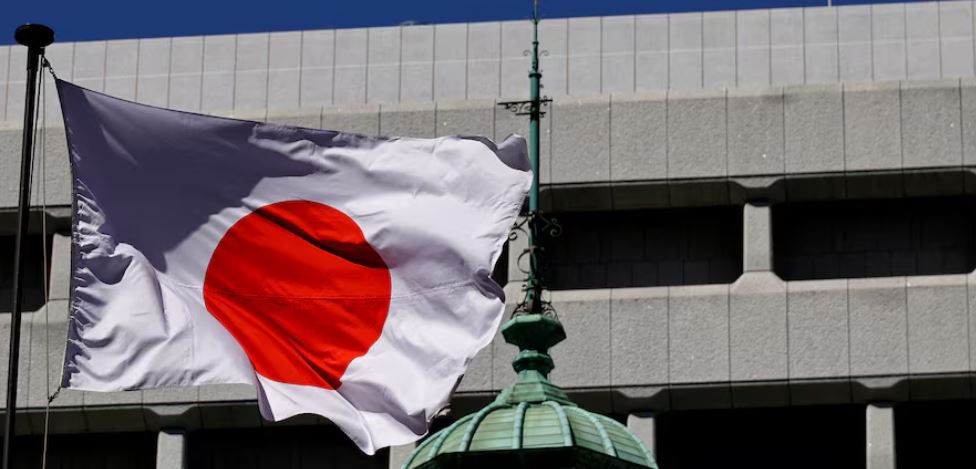Japan’s economy, long characterized by deflation and stagnation, is experiencing a seismic shift. Inflation has surged past 2%, prompting the Bank of Japan (BoJ) to raise interest rates for the first time in nearly two decades. The stock market is soaring, with the Nikkei and Topix indices reaching unprecedented heights. However, this newfound dynamism comes with a paradoxical twist: amidst a red-hot labor market, demand is falling, and prices are rising.
The Nihonbashi Microcosm
Nihonbashi, a historic Tokyo neighborhood whose fortunes have long mirrored Japan’s economic trajectory, offers a glimpse into this perplexing reality. Benmatsu Souhonten, a centuries-old bento shop, has been forced to raise prices twice in two years due to soaring import costs. Yet, customers continue to patronize the establishment, signaling a shift in consumer sentiment towards accepting price increases.
The BoJ’s Inflationary Gambit
This change aligns with the BoJ’s long-held goal of re-anchoring inflation expectations around its 2% target. By maintaining ultra-low interest rates even as inflation rose, the central bank aimed to leverage external shocks to alter domestic perceptions of price trends. This strategy appears to be bearing fruit, as prices for a wide range of goods are now increasing at their fastest pace since the 1990s.
Tight Labor Markets and Rising Wages
The tight labor market, fueled by a shrinking working-age population, has also contributed to wage growth. Annual negotiations have resulted in substantial salary increases, a trend expected to continue due to demographic shifts and changing attitudes towards job mobility among younger generations.
A Turning Point for Corporate Japan
The combination of rising prices, higher wages, and gradual improvements in corporate governance has sparked optimism among investors. The Japan Stock Exchange is abuzz with activity, as many corporate leaders are pivoting from cost-cutting measures to investment-driven growth strategies. A new government program encouraging retail investing has also gained traction, particularly among younger generations.
Consumer Gloom Amidst Economic Optimism
Despite the investor enthusiasm, Japanese consumers remain apprehensive. Wage growth continues to lag behind inflation, resulting in real pay cuts for many. Consumption is sluggish, with domestic shoppers replaced by foreign tourists drawn to Japan’s relative affordability. The yen’s real effective exchange rate has plummeted to historic lows, underscoring the country’s economic challenges.
Demographic Headwinds and Future Prospects
The demographic pressures that have tightened the labor market also pose a significant obstacle to long-term growth. Japan’s working-age population is projected to shrink dramatically in the coming decades, limiting the country’s potential growth rate to below 1%.
A Glimmer of Hope
Despite these challenges, a sense of cautious optimism pervades Nihonbashi. The local business association leader acknowledges the difficulties of a shrinking population and labor shortages but sees the current economic dynamism as a positive sign compared to the stagnation of the past. While the road ahead may be fraught with uncertainty, the prevailing sentiment is one of hope for a brighter future.
Key Takeaways:
| Aspect | Significance |
|---|---|
| Economic Paradox | Japan experiences rising inflation, falling demand, and a tight labor market. |
| BoJ’s Strategy | Central bank aims to re-anchor inflation expectations through accommodative policy. |
| Wage Growth | Tight labor market leads to significant salary increases, but inflation outpaces gains. |
| Investor Optimism | Rising stock market and increased retail investing signal confidence in the future. |
| Consumer Gloom | Real wage cuts and sluggish consumption dampen consumer sentiment. |
| Demographic Challenges | Shrinking working-age population poses a significant obstacle to long-term growth. |

Sunil Garnayak is an expert in Indian news with extensive knowledge of the nation’s political, social, and economic landscape and international relations. With years of experience in journalism, Sunil delivers in-depth analysis and accurate reporting that keeps readers informed about the latest developments in India. His commitment to factual accuracy and nuanced storytelling ensures that his articles provide valuable insights into the country’s most pressing issues.



